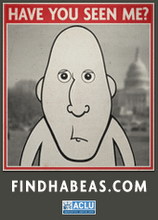It was never the CD's fault - at least, not in the way you think. 1983-87
As the LP
began its resurgence early in the 21st century, people found all
kinds of crimes to lay at the feet of the compact disc, yet the problem had
little to do with its format, or with the digitization of a recording in and of
itself. Sure, plenty of people claim the preservation of an analog slope in an
LP makes the music sound “warmer” with a good turntable, but what the hell does
that even mean? Listening to the first CDs was indeed a revelation, because one
could experience a clean, unadorned melding of individual musical instruments.
The debut of CDs in 1983 happened long before audiologists discovered people
have a much better listening experience if a little white noise is thrown in
with the signal (think cracks and pops in an LP).
But because the CD was introduced at roughly the same time as the Mac and the IBM PC, many people confused the digitization of the master musical recording, for transfer to an audio CD, with the later lossy compression of music for easier downloading and burning of files on a desktop device with limited storage capacity. CDs used dynamic Pulse Code Modulation during transfers from master tapes, masters which could be analog or digital. Sampling rates were significantly higher than either the lossy (MP3) or lossless (WAV, FLAC) compression standards introduced in the 1990s, but keep in mind, the later compression standards operated on files, and such standards were not necessary in the 1980s, and would not arrive until the late 1990s. But one could not assume that PCM compression used in most studio recording was safe – in 2025, scientists at the Pasteur Institute in Paris showed in work with guinea pigs that listening to PCM-compressed music caused more damage to the middle-ear’s stapedius muscle, than listening to uncompressed music in a natural environment. Yet in the early 1980s, CDs using only the studio-supplied PCM compression could provide excellent sound quality unless studio recording engineers messed with the equalization and the high- and low-pass filtering, which is precisely what was done to most commercial CDs by the late 1980s.
With an ideal source, an
early CD of classical music or acoustic jazz was indeed a joy to hear. The
problem was that the arrival of the CD gave record companies a chance to
maximize profits while paying little attention to the best way to offer digital
sound. It was a no-brainer to realize that record companies would appeal to
boomer sensibilities by reissuing albums from the previous 25 years in CD
formats as rapidly as possible, hoping that many music buffs would fully
replicate their collections in the little silver discs. In most cases, that
meant not making any effort to re-master old recordings to take advantage of
CDs’ digital representation. Later in the next century, these old recordings
were given better treatment at the 40th or 50th
anniversaries of their release, by getting re-mastered versions released in CD
or LP. But in the mad gold rush of 1983-86, little of that happened.
It was just as bad or worse
for new music being released on CD. A few bands from the Athens, GA scene or
the Paisley Underground realized a good CD release was best for optimizing
strings and horns with depth, along with a solid bass sound. But most
mainstream producers in the camps of hip-hop, dance-pop, and Minneapolis soul
preferred a bright and treble-heavy sound with plenty of synthesizers. At the
time, it was thought to be the best optimization for the CD format
(particularly for a boombox or an automotive CD player), but in most cases it
made for a more tinny, less substantive sound. What is worse, artists like
Carly Simon or Judy Collins, who should never have been given a synthesizer
treatment, were graced with similar engineering to make their sounds more
plastic. (What, exactly, is meant by “synthesizer
swoosh”? Peruse any of the 1980s albums of (Jefferson) Starship, Loverboy,
Journey, etc. for prime examples of a genre best left forgotten.) These
production aesthetics occasionally worked, for example in Michael Jackson’s Thriller. A few electronica-influenced pioneers like
Orchestral Maneouvres in the Dark and Haircut 100 used it to their advantage. But
in most cases, the “80s Sound” was a mistake in execution. And the mistakes in
the recording studio were blamed for the most part on the CD itself.
There was a subtle hint of
irony in the fact that only four months after the March 1983 debut of the CD in
U.S. markets, Jean-Michel Jarre held a protest against home taping (what he
would call “piracy”) by releasing a single copy of his latest album. In
retrospect, home taping from CD to cassette seemed like a negligible hit to the
revenues of artists when compared to the later furors over home CD burning,
Napster and similar free downloads, streaming services like Spotify – each
successive technology seemed to cheapen the revenue opportunities for new
artists, while at the same time making exponentially more music available for
the individual consumer. But during Jarre’s days of contention, using the CD as
a master to churn out cassettes seemed like an apocalypse for the musical
artist.
This made the morphing of
punk into hardcore seem all that much more of a failure to adequately respond
to 1980s corporatization of popular music. Granted, a few art-rock specialists
like Laurie Anderson and Negativland were providing lonely voices not only in
opposition to Reagan’s “Morning in America,” but in opposition to the
assumptions driving the Sony/Warner/Geffen machines in general (and Laurie’s
massive United States Live made jaws drop more than
her earlier O Superman) .
Hardcore punk, by contrast,
not only relished in its own marginalization, but relied on unbridled anger and
the repetition of trite anti-Reagan name-calling to brand the hardcore tribe.
Exceptions to the rule, like Jello Biafra and The Dead Kennedys, stood out in
part because the rest of the scene was so tedious. I often felt, when watching
a hardcore show, the way I did listening to David Peel or Rastafarians sing
about pot – “Fine, smoke some weed, but you can’t build a movement on such thin
gruel.” (And of course, the straightedge contingent within hardcore didn’t even
have the substance-abuse signifier to hang their toques on.) One of the reasons
why hip-hop leaders like Run DMC and Beastie Boys sounded so radical when they
emerged later in the decade was because they were responding to a pent-up
demand for something rebellious and fresh.
In the third decade of the
new millenium, it seems almost quaint to talk about the power of major labels,
since the gaming and streaming industries have left recorded music as a denuded
husk of its former self. But the combination in the 1980s of a “baby bust” that
left far fewer teens to launch new garage bands, and a consolidated music
industry looking only for proven entities like a Phil Collins or Rod Stewart,
meant that an independent music business was almost nonexistent. It’s no
accident that teens discovering hip-hop and their disgruntled older siblings
looking for indie music discovered mixtapes at about the same time. The music
industry was skewing toward an older, more conservative audience.
It would be an exaggeration
to suggest that the baby bust so affected the creation of teen bands that the
mid-1980s existed as a unique hormone-drained desert. But most larger labels
had pulled back on A&R budgets and were only interested in the older,
established acts. Many younger bands had no chance of being released on CD, and
resorted to 45 rpm singles releases, or cassette releases of both EPs and
full-length releases. New Music Express in the UK
tracked some of these bands in their popular C86/C87 series,
which were expanded to multi-disc CD releases in the 21st century. In
the U.S., the “jangle pop” underground of REM wanna-be bands of 1983-87 did not
even get a proper compilation until Captured Tracks released Strum & Thrum in 2020. As was the case with the earlier Nuggets and Pebbles
compilations of 1960s garage rock, if the 1980s compilations had not been
released at a later date, all memory of many of the bands might have faded away,
except among extremely eclectic collectors.
In the mid-1980s, there were a few better-selling new bands like Sonic Youth coming into being, and new labels like SST and Homestead in a nascent state, but a true “indie rock” business was still almost ten years away. First music lovers had to live through such atrocities as the Sony acquisition of Columbia Music in 1988, and the petulant billionaire David Geffen trying to pass off Geffen Records as an alternative to the big kids (the same David Geffen who would later sue Neil Young for making albums that “didn’t sound like Neil Young”).
When REM released the Chronic Town EP and the full-length Murmur on the
new IRS label, it was already clear that Miles Copeland’s new imprint would own
much of the college radio market, signing bands ranging from The dB’s to The
Go-Gos to Suburban Lawns to Wall of Voodoo. It wasn’t that IRS had such better terms than other labels
or that the majors were cluelessly conservative, the lack of serious
competition to IRS was a reflection of the college-radio market being less
interesting in a baby-bust Generation X world. Most of the original IRS
releases were vinyl, though Copeland was on top of the CD shift, which took
place for IRS between 1983 and 1985. Keep in mind, the entire IRS roster meant
next to nothing to the average fraternity/sorority or business-major student,
in the same way that campus protests over apartheid, Euronukes, or Reagan’s
funding of the contras failed to enter such students’ consciousness. If you
were going to school in Boston, Berkeley, Isla Vista, or Santa Cruz, you might
consider such cultural elements a big deal, but middle American did not.
When CDs expanded
manufacturing to the U.S. from original plants in Japan and Germany, it surprised
few people that Bruce Springsteen’s Born in the USA would be
the first mass-produced disc, followed closely by Mariah Carey’s debut
long-player. Punks and rebels, even those in the relative mainstream like X
with its third album More Fun in the New World, or The
Replacements with their first four albums, would be strictly vinyl, with CDs
following several years later as production facilities expanded. This may have
made a difference to boomers reaching middle age who were entranced by the new
format, but teens and college-age listeners were shifting to mixtapes and only
saw CDs as a useful vehicle for future Walkman products. The arrival of this
format was a wash for existing record-store owners – CDs did indeed represent a
new way to repackage existing works for customers, but the small form-factor of
the case made it necessary to develop long-form cardboard packages to prevent
theft (with this dual packaging, most of it going to landfill, increasing the
CD’s environmental footprint). Also, CDs tended to be sold in big-box retail
stores as much or more than dedicated music stores, at least until new
independent labels helped create a market for the smaller or regional artist.
College and young-adult parties
in 1984-85 tended to be dominated by power playlists of Van Halen, Madonna,
Billy Joel, Tina Turner, and Michael Jackson, mildly interesting in their own
right, but rarely inventive. In the mid-1980s, it was only Prince, Mats, and a
handful of others who demonstrated innovation. Albuquerque had a decent
underground club scene at the time, but when hardcore punkers all were trying
to imitate DRI or Black Flag, it got almost as tedious as the mainstream. I
would occasionally frequent dedicated hardcore venues like B&M Lock
(affectionately known as “Bash & Mash”), but I got bored rather quickly. Art
rockers like Laurie Anderson, Flipper, and Butthole Surfers played a bigger
role keeping the music aficionados awake than was realized at the time. What
with relationship heartbreaks and Dadaist visits to the Democrat and Republican
conventions in 1984, my own soundtrack that year tended to Bananarama’s “Cruel
Summer.”
I lived with a few former
Tempe friends in a house on Silver Street in Albuquerque known as the “Loco
Pony,” with a similar artist enclave across the street that became the Pony
Annex. Somehow, Navajo and Lakota Sioux members of American Indian Movement
ended up at the Loco Pony, as did Katowice refugees from the 1981 declaration
of martial law in Poland. The most colorful member of the household was arguably
Seamus McKillip, an Irish character who sold mobile homes, and made several
late-night TV commercials featuring his dog Coco, a collie who wore neckties.
Seamus threw regular sartorial parties for Coco, where the price of admission
was a necktie.
Needless to say, we were all surprised when
the FBI raided the Loco Pony in 1985, and it turned out Seamus McKillip was
really James Barrett of the Sam Melville/Jonathan Jackson Armed Revolutionary
Front, which later became the United Freedom Front, subject to nationwide FBI
raids in 1984. For months, the FBI was
convinced that the presence of AIM members and Polish refugees in the same
house must mean something crucial.
Barrett apparently turned state’s evidence against Raymond Luc
Levasseur, and promptly vanished. Coco ended up at a chicken ranch in Oklahoma.
The arrival of Springsteen’s Born in the USA represented another trend of the CD era, outside
the physical format. Springsteen’s three releases since Born to Run (four if you count the unreleased album The Promise) – Darkness at the Edge of Town,
Nebraska, and The River – all
offered wry and relatively dark musings on the lies inherent in the promises
made to the American working classes. Born In the USA continued
this in a subtler vein where the tongue almost could not be dislodged from the
cheek. Many conservative Americans interpreted it as the quintessential
patriotic album, though that was far from Springsteen’s intention. He wanted to
couch critiques within the parameters of the dominant “Morning in America”
narrative. Reviewers were quick to recognize this was clever, while cultural
critics thought that Springsteen was censoring himself. Both camps failed to
notice that Springsteen’s deep cuts often were the best, as they were in past
releases, this time including “Bobby Jean” and “Downbound Train.”
In reality, The Boss was merely following a
trend of narrowed parameters of protest that characterized the U.S. between roughly
1982 and 1987. In the final two years of Reagan’s reign, genuine musical
protest arose regarding South African apartheid, AIDS policies, and expanded
Central American wars. But the five years in the middle of Reagan’s two terms,
precisely the time when the CD was getting established, were a time of muted
protests not only against Reagan, but against corporate control in the music
business.
CDs, therefore, took on guilt
for crimes that were not of their making – poor, tinny, and synth-heavy
engineering; muted opportunities for social protest; and the lack of a second-
and third-tier “farm team” of musicians behind the standouts. Both the 1970s
punk era and 1990s indie era boasted the presence of dozens of artists on the
periphery of most music listeners’ consciousness. In the 1980s, there were
small support teams behind REM in the Athens scene, behind Mats and Prince in
the Twin Cities scene, and within the Paisley Underground/jangle-pop scene, all
of which got far less attention than they deserved. In other realms, standouts
like The Smiths and the latter-era Talking Heads had to shoulder a scene on
their own. These three factors were social signs of the times that were only
accidentally a product of the CD era, yet the maligned little shiny disc took
on the sins of a decade.
As for rap, the major impact
of groups like Run DMC, NWA, Beastie Boys, and Public Enemy did not arrive
until mid-decade. In the early 1980s, it remained underground, albeit with a
significant white audience. Many people assume that Tipper Gore’s founding of
the Parents Music Resource Center in 1985 was a response to gangsta rap, but
her motivating source was really a Prince single. Dissent was brewing below the
surface, but most middle-class Americans remained unaware of it until pioneers
like Rick Rubin brought rap groups to major labels in the second half of the
decade.
I might have given up on
popular music in the cruel summer of 1984, were it not for the simultaneous
arrival of early works from The Cure and The Smiths, as well as Laurie
Anderson’s sprawling United States Live. Other
artists were peeking out from under corporate somnambulance, including Michelle
Shocked and 10,000 Maniacs. It would take until decade’s end for the early buds
to blossom into a true grassroots DIY movement, but at least it held the
promise of something beyond corporate dancey-pop.














No comments:
Post a Comment